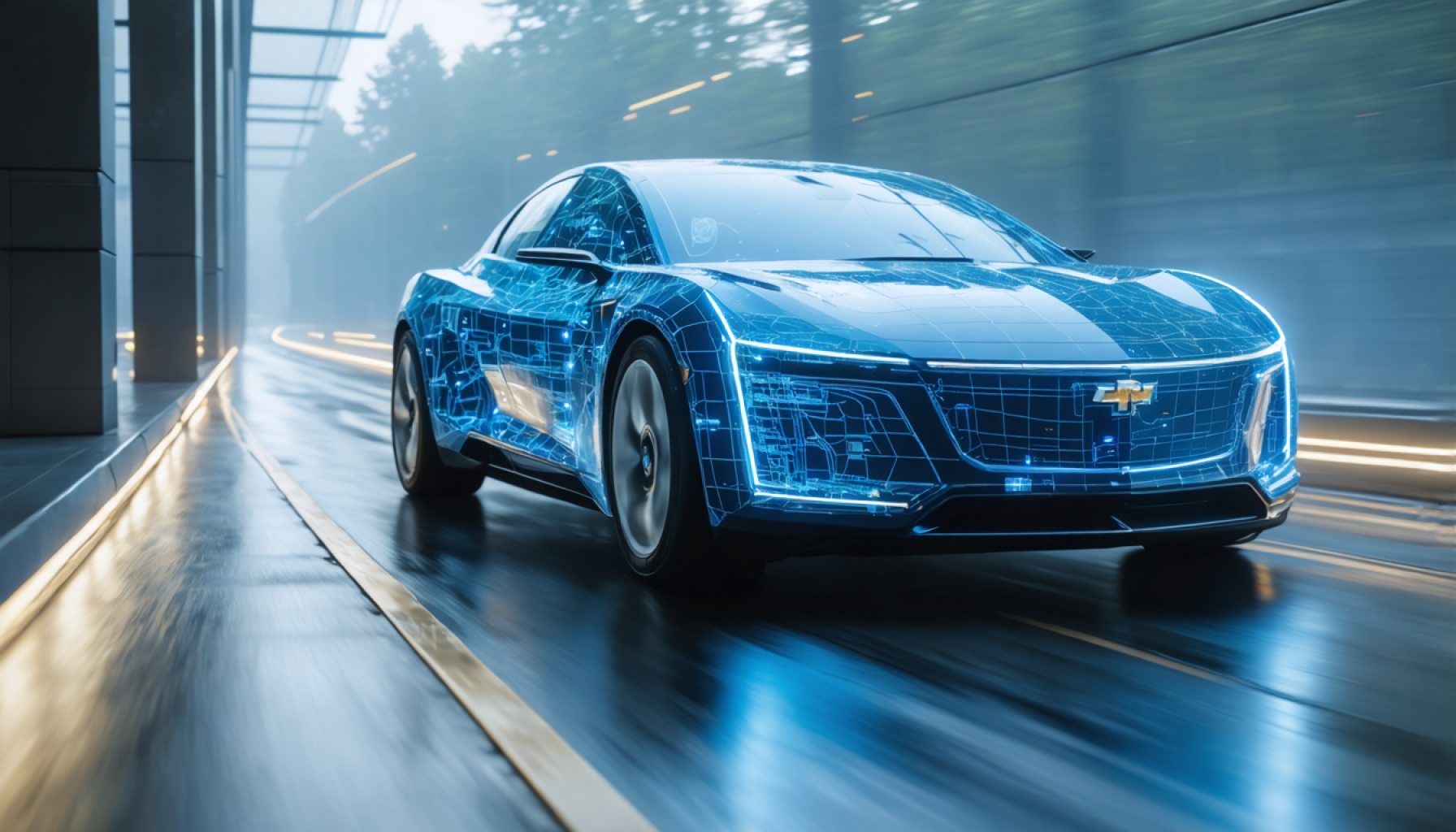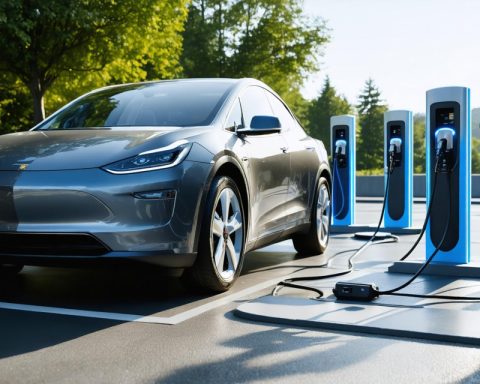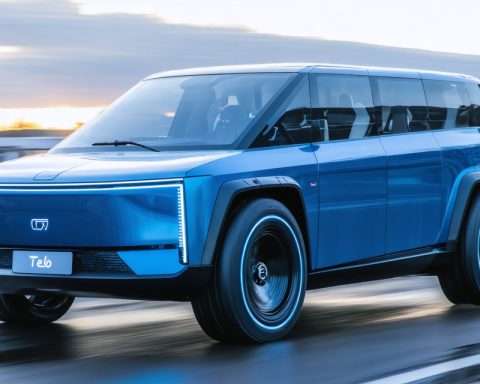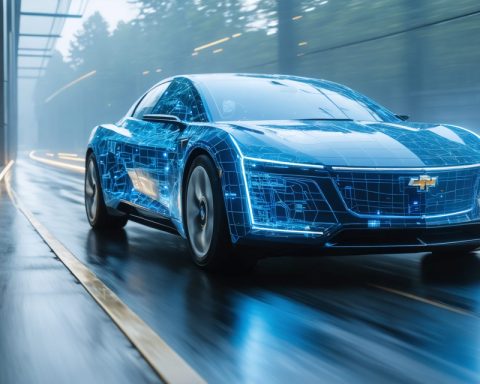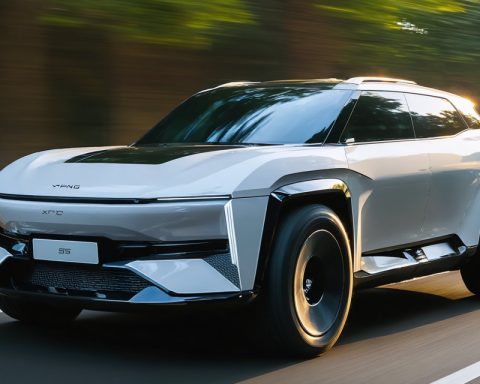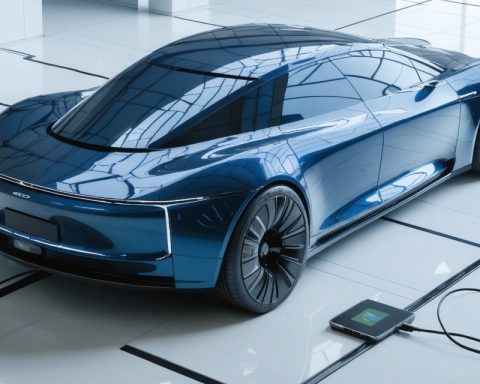- General Motors is leading a shift towards advanced electric vehicle technology with silicon anodes, promising faster charging and longer range.
- Silicon anodes can store up to ten times more lithium ions than graphite, offering significant potential for lighter and more efficient batteries.
- Challenges include managing silicon expansion during charge cycles, addressed through innovative coatings to extend battery life.
- Global companies like Amprius, ProLogium, and Panasonic are actively enhancing silicon battery technologies, aiming for rapid charging solutions.
- EV sales are soaring, supported by tax incentives, lower operational costs, and enhanced fast-charging networks reducing range anxiety.
- GM plans to expand charging infrastructure with 30,000 new fast-charging stalls, emphasizing their commitment to sustainable transportation.
- Experts forecast a 50% drop in battery costs by next year, facilitating wider adoption of silicon technology for EVs by 2030.
General Motors is quietly laying the groundwork for a seismic shift in electric vehicle technology. Picture this: a future where EVs charge faster, drive farther, and impact the environment less, thanks to the introduction of silicon anodes in their battery packs. Within the next decade, this vision might just become reality.
Silicon, a plentiful element on Earth, has a compelling advantage over the traditionally used graphite in batteries. It can store a remarkable ten times more lithium ions per pound, promising not just increased range, but potential to reduce the weight of our vehicles. However, as with all good things, there’s a challenge. Silicon tends to expand and contract during charge cycles, which can compromise the battery’s lifespan.
To combat this, innovators are developing specialized coatings that mitigate the bloating issue, enhancing the resilience of silicon anodes. The stakes are high, but the rewards could redefine what we expect from electric mobility.
Companies around the globe are racing to harness silicon’s potential. In California, Amprius claims its silicon anode technology can power a 90% charge in merely 15 minutes. ProLogium from Taiwan has presented an innovation that awards EVs nearly 200 miles of range with just five minutes of charging. Panasonic is also investing heavily in silicon technologies, indicating a robust industry-wide commitment to this promising material.
Back on home soil, EV sales are accelerating at breakneck speed. January alone saw close to 130,000 units sold, driven by a mix of alluring tax incentives and the undeniable economic perks of electric driving—think thousands saved in fuel and maintenance, and incomparable contributions to reducing one’s carbon footprint.
But it’s not just about cost savings and green credentials. EVs are proving their worth on the road. The latest models boast a median range of 270 miles and with fast-charging networks like Tesla’s extensive Superchargers, the days of range anxiety are fading fast. These chargers can inject hundreds of miles worth of power in about 15 minutes, making long trips as feasible as they are in conventional vehicles.
GM, aligning with fellow automakers, pushes forward not only by investing in silicon technology but also by partnering to expand charging infrastructure. Their ongoing collaboration with joint ventures aims to roll out 30,000 new fast-charging stalls in the near future, emphasizing the automaker’s commitment to a sustainable, electrified future.
Experts project that by next year, the cost of batteries could plummet by nearly 50%, thanks to technological advancements and reduced costs of components. As a result, adopting silicon in GM’s batteries could soon be realized, forming a cornerstone of their next-gen power packs by 2030 — a tantalizing goal articulated by their battery R&D honcho, George Cintra.
The transformation within the automotive industry is as much about vision as it is technology. GM’s pursuit of silicon-based batteries resonates with a broader message: innovation is our most potent tool in driving towards a more sustainable future.
If you’re curious about how these innovations will continue to shape our world, subscribe to our newsletter for weekly insights and discover simple steps you can take to help build a better tomorrow.
And don’t miss out on the chance to make a personal impact while equipped with newfound knowledge, because in this rapidly evolving world of technology, your journey towards a more sustainable lifestyle is just beginning.
Revolutionizing EVs: How Silicon Anodes Could Change Everything!
Transformative Potential of Silicon Anodes in EVs
As General Motors (GM) leads a groundbreaking shift in electric vehicle (EV) technology, the integration of silicon anodes presents exciting opportunities and challenges in battery innovation. Silicon’s ability to store ten times more lithium ions than graphite could mean longer range and lighter vehicles, but it comes with technical hurdles to overcome. As companies strive to refine this technology, here are some detailed insights and potential impacts on the EV industry.
How Silicon Anodes Work and their Advantages
Silicon anodes can significantly enhance battery performance. Their high capacity for lithium storage translates into batteries that can potentially power EVs for longer distances between charges. For example, Amprius in California claims its technology enables a 90% charge in just 15 minutes, demonstrating the promise of rapid recharging.
Challenges with Silicon Anodes
The primary challenge with silicon anodes is the expansion and contraction during charging cycles, which can lead to material degradation and reduced battery lifespan. Innovators are exploring specialized coatings to address these issues. If breakthroughs in these protective coatings are achieved, the adoption of silicon anodes could become widespread.
Industry Trends and Predictions
The move towards silicon-based batteries is part of a broader industry trend focused on enhancing battery efficiency and sustainability. Companies like ProLogium and Panasonic are heavily investing in this technology, showing a global commitment to developing more effective battery solutions. Experts project that by next year, the cost of batteries could drop nearly 50%, making advanced technologies like silicon anodes more economical for mass production.
Pros and Cons of Silicon Anodes
Pros:
– Increased energy density leading to longer range.
– Potentially faster charging times.
– Lighter weight solutions, contributing to overall vehicle efficiency.
Cons:
– Expansion and contraction issues can shorten lifespan.
– Technological challenges in developing effective coatings and stabilizers.
– Transition to mass production may require significant infrastructure changes.
Real-World Use Cases and Expectations
Beyond the laboratory, these advancements could transform everyday travel, making electric vehicles more appealing to consumers. As fast-charging infrastructures continue to expand, like GM’s plan for 30,000 new stalls, the combined effect of improved batteries and easy accessibility to charging will help alleviate range anxiety further.
Actionable Tips for Prospective EV Owners
1. Stay Informed: Follow industry developments to understand how battery technology improvements affect vehicle performance and cost.
2. Consider Incentives: Take advantage of tax incentives for electric vehicles that can mitigate initial investment costs.
3. Plan Charging: Familiarize yourself with fast-charging locations to maximize convenience on long trips.
A Sustainable Automotive Future
Silicon anodes hold the potential to redefine electric mobility, promising faster charging, longer distances, and better environmental impact. While challenges remain, the ongoing investments and research efforts are likely to bring tangible benefits in the coming years.
To dive deeper into the world of electric vehicles and stay updated on groundbreaking innovations, consider subscribing to [General Motors’ newsletter](https://www.gm.com/) and explore the latest in automotive technology.
Embarking on this path not only enhances your personal travel experience but also contributes to a cleaner, more sustainable world. Keep an eye on evolving technologies and infrastructures to make well-informed decisions on future car purchases.
For more detailed insights on the automotive industry’s pivot towards sustainability and innovation, visit [General Motors](https://www.gm.com/).
